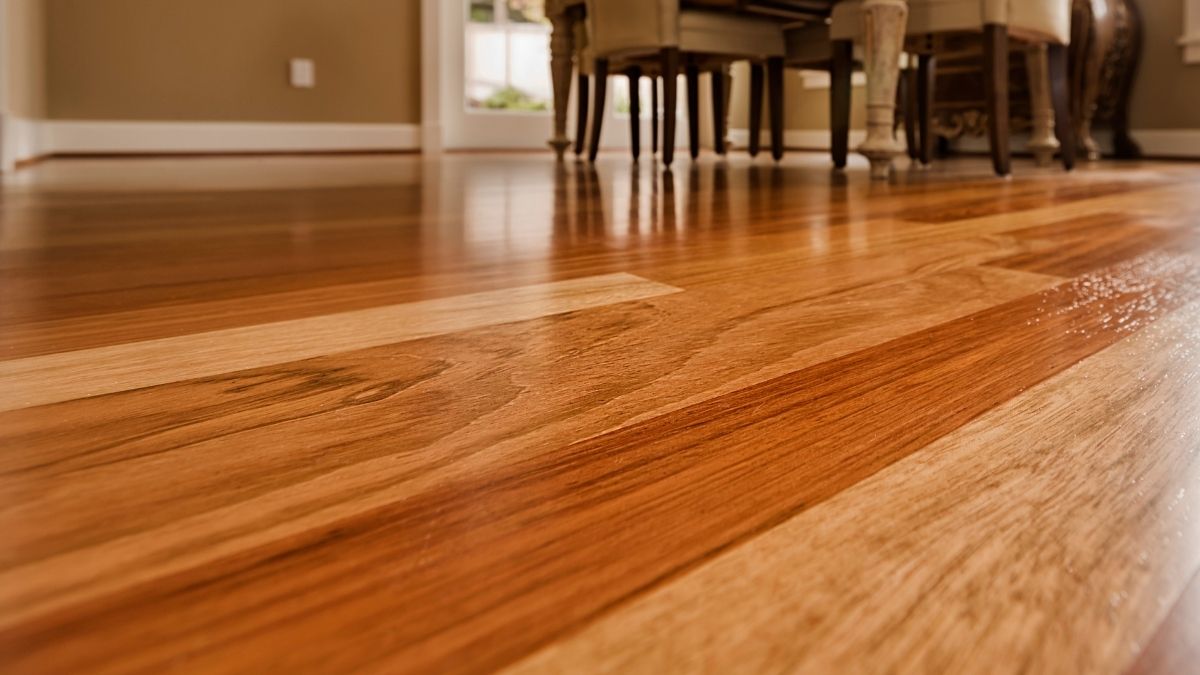
Choosing the right finish for hardwood floors plays a crucial role in durability, aesthetics, and environmental impact. Traditionally, oil-based finishes have been the standard, offering rich colour enhancement and long-lasting protection. However, water-based finishes have gained popularity due to their faster drying times, lower volatile organic compound (VOC) emissions, and their ability to preserve the wood’s natural appearance. These advantages make them an excellent choice for both homeowners and businesses looking for a balance between performance and environmental responsibility.
Faster Drying and Reduced Downtime
One of the biggest advantages of water-based finishes is their quick drying time. Unlike oil-based alternatives, which can take up to a full day between coats and several days to cure, water-based finishes dry within one to two hours per coat. This allows multiple applications in a single day, significantly reducing the time needed to complete the project. Floors finished with water-based coatings can typically handle light foot traffic within 24 hours, whereas oil-based finishes require several days before they can be walked on safely. This faster drying time is particularly beneficial for busy households, commercial spaces, and rental properties where minimising downtime is essential.
Healthier Indoor Air Quality with Low VOC Emissions
Traditional oil-based finishes release high levels of VOCs, which contribute to strong odours and indoor air pollution. These emissions can cause headaches, dizziness, and respiratory irritation, particularly in enclosed spaces with limited ventilation. Water-based finishes, on the other hand, contain significantly fewer VOCs, which means they’re a safer choice for indoor environments. This makes them ideal for homes with children, pets, or individuals with allergies or asthma. In commercial settings, using a low-VOC finish ensures a healthier workspace while complying with increasingly strict environmental regulations.
Preserving the Natural Look of Wood
A key difference between water-based and oil-based finishes is their impact on the wood’s colour. Oil-based finishes tend to develop a warm, amber hue over time, which may not be suitable for all wood types. Water-based finishes, however, provide a clear, natural appearance that preserves the original colour of the wood. This makes them particularly well-suited for light-coloured hardwoods such as maple, ash, and oak, where maintaining a neutral tone is preferred. For those who want a slightly warmer look, tinted water-based finishes offer a middle ground without the heavy ambering effect of traditional oil-based coatings.
Strong Protection Against Wear and Tear
Modern water-based finishes are formulated to provide excellent durability, often matching or even exceeding the performance of oil-based alternatives. High-quality waterborne polyurethanes offer strong resistance to scratches, scuffs, and moisture, making them suitable for high-traffic areas such as hallways, living rooms, and commercial spaces. While they are generally thinner than oil-based finishes, multiple coats create a tough protective layer that stands up well to everyday wear. Additionally, water-based finishes do not yellow over time, ensuring that floors maintain their original look for years.
Eco-Friendly and Sustainable Choice
As environmental awareness grows, more homeowners and businesses are looking for sustainable solutions in flooring maintenance. Water-based finishes have a lower environmental impact than traditional solvent-based products due to their reduced chemical emissions. Their water-based composition makes them safer to apply, easier to clean up, and more eco-friendly to dispose of. Choosing a water-based finish also aligns with sustainable flooring practices, particularly when used on reclaimed wood or responsibly sourced hardwood. This makes them an ideal option for those who prioritise environmental responsibility without compromising on quality.
Best Applications for Water-Based Finishes
Water-based finishes are suitable for a variety of settings, including residential homes, commercial properties, and historic restorations. In homes, they offer a safe, low-odour solution that allows families to continue using their space with minimal disruption. In businesses, the quick drying time reduces downtime, enabling operations to resume sooner. For historic hardwood floors, the clear finish helps preserve the authenticity of the wood without altering its original tone. These advantages make water-based finishes a practical choice across a range of applications.
Achieving the Best Results with Water-Based Finishes
Proper application is key to ensuring a smooth, durable finish. Preparing the surface by sanding and removing dust ensures better adhesion. Applying multiple thin coats rather than fewer thick layers helps build a stronger protective surface without streaks or bubbles. Using a synthetic applicator, such as a microfibre roller or a high-quality brush, results in an even finish with minimal texture. While water-based finishes dry quickly, full curing takes about one to two weeks, so it is best to avoid placing heavy furniture or rugs on the floor during this period.
Final Thoughts
Water-based finishes offer a modern, high-performance alternative to traditional oil-based coatings, providing a combination of durability, environmental benefits, and aesthetic appeal. Their fast drying time, low VOC emissions, and ability to maintain the wood’s natural appearance make them an excellent choice. While oil-based finishes still have their place for those seeking a deep, rich patina, water-based options provide a healthier and more sustainable solution for modern flooring needs.
FAQs
Can I apply a water-based finish over an existing oil-based coating?
Yes, but proper preparation is essential. The old finish must be thoroughly sanded to ensure good adhesion, and a bonding primer may be needed to create a strong seal between the two layers.
Do water-based finishes require more coats than oil-based finishes?
Generally, yes. Water-based finishes are thinner, so applying three to four coats provides optimal protection, whereas oil-based finishes often require two to three coats for a similar level of durability.
How soon can I move furniture back after applying a water-based finish?
Light furniture can be placed after 24 hours, but it’s best to wait at least seven to fourteen days before adding rugs or heavy items to allow the finish to cure completely.

 Log in with Facebook
Log in with Facebook 









